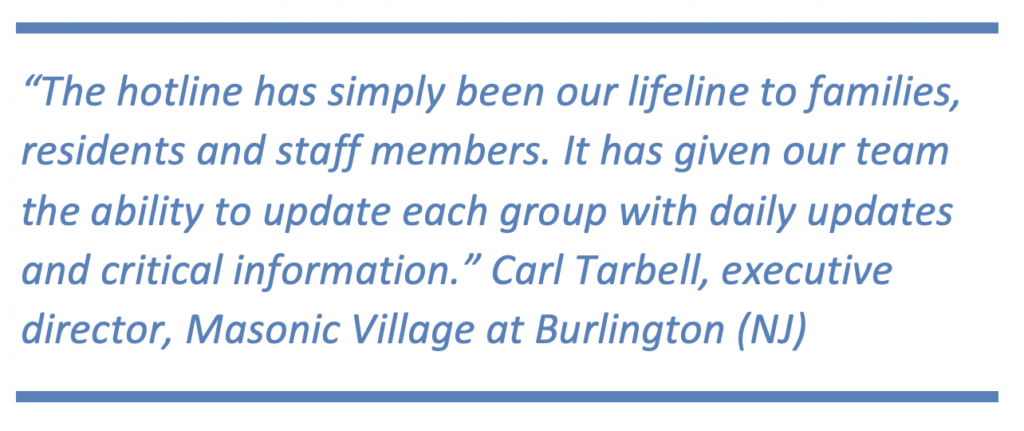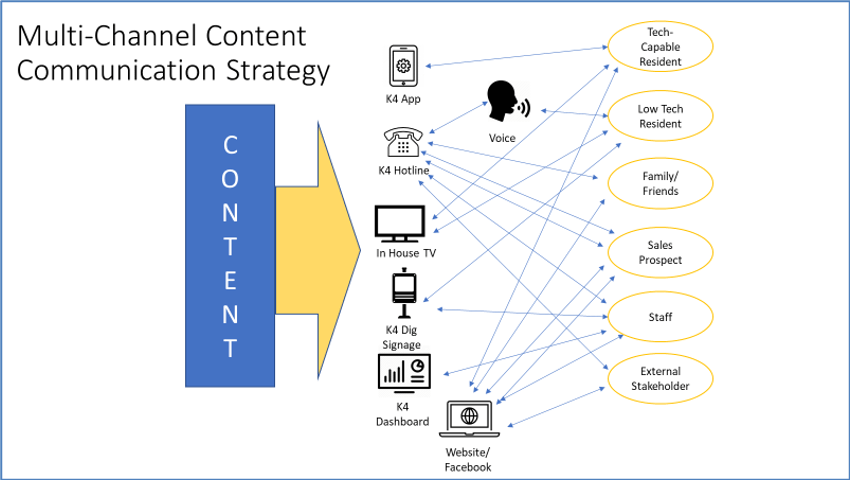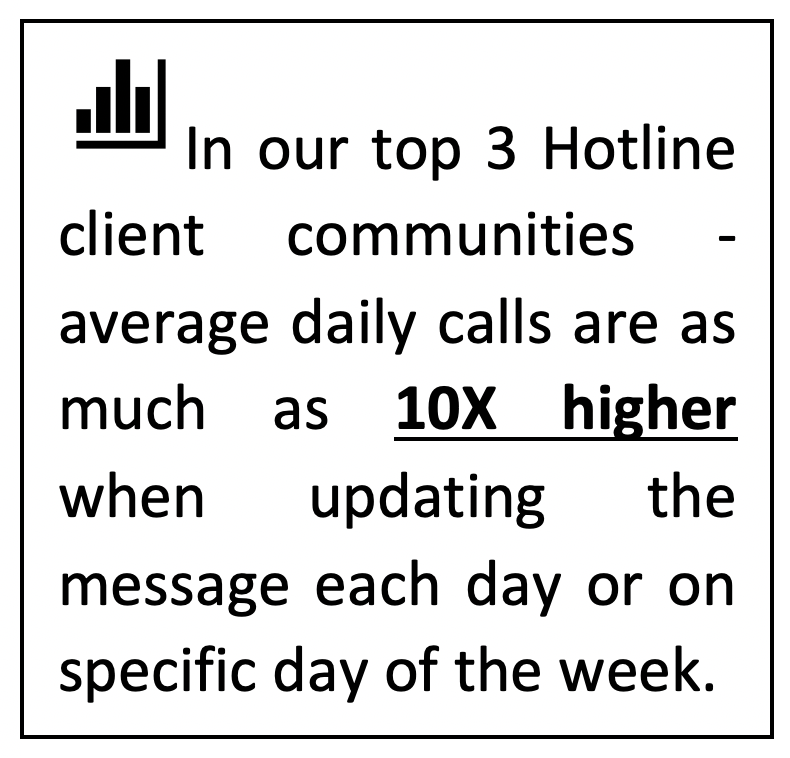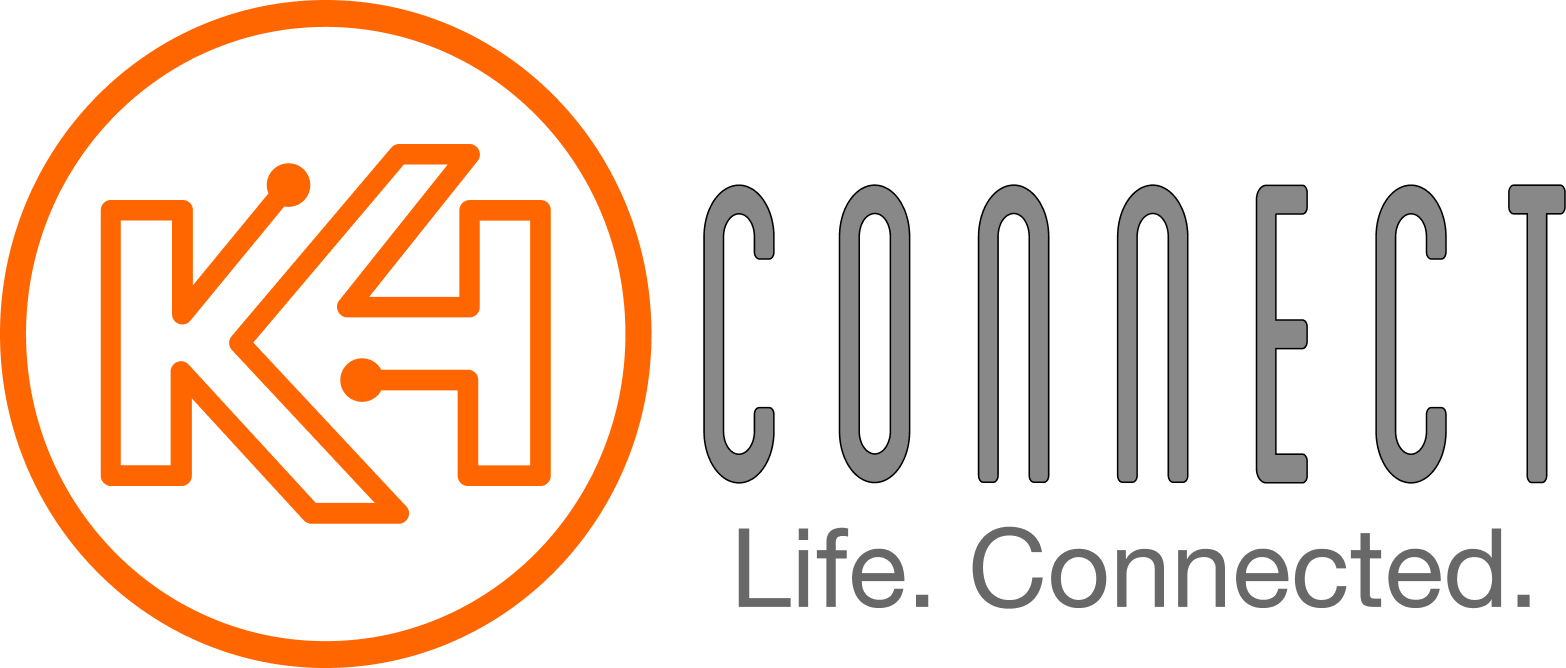“A multi-channel communication strategy is nothing new, but in the chaos of COVID-19, it was easy to get scattered and start communicating in a very disconnected way.“
By: Cindy Phillips | Managing Partner, K4Advisors
June 2, 2020
The K4Community Hotline is just what it sounds like – a recorded message line that keeps callers informed on the latest information in a community. The Hotline accomplishes two things that are critically important right now:
- Informs residents, families, and staff about the latest COVID-19 information (for skilled nursing, that is now a C.M.S. regulatory requirement and may be for AL/MC); and
- Offsets the time caregivers are spending fielding those repetitive calls (see previous article for examples of how to use Hotline for communication beyond COVID-19).

While the Hotline has been a simple and easy solution to implement during this unplanned COVID situation, communities now have time to ensure it fits into their overall, multi-channel communication strategy (see figure below).
A multi-channel communication strategy is nothing new, but in the chaos of COVID-19, it was easy to get scattered and start communicating in a very disconnected way.

Here are three steps to ensure your K4Community Hotline is part of a more integrated strategy:
- It is essential to identify the key stakeholders you plan to reach and second, what are the best ways to reach them. Most of our communities set up two Hotline lines, one for internal audiences (residents and staff), and another, external Hotline for families, prospects, volunteers, etc. You can of course pull out any one of the audiences – for example, prospects, and customize the message specifically for them.
What I specifically like about the internal Hotline, along with digital signage or your TV insertion channel, is that it provides an easy way to reach low-tech residents, so that you can limit the amount of paper you have to send out. Another approach to simplifying access to a Hotline is deploying Amazon Alexa devices (via our K4Community Voice platform), allowing for residents to utter a simple voice command to listen to an updated Hotline message. - Content is the driving force in communication. In crisis, it must be created or assembled in a single place. Messaging must be tailored to the various stakeholder groups, and then distributed to each channel in a timely and consistent manner. But if the Hotline is not part of your overall communication strategy, or if you try to cover too many groups with a single message, you are likely to miss the mark. See our best practices video for recording an effective Hotline message.
- Frequency is the final component. Communication (especially during times of fear and uncertainty) is most effective when it is predictable and at a regular cadence. If you are trying to reduce unproductive calls to staff, you must build a habit for your audience to check in regularly, knowing it will have new information on a specific day or time.
Making this Hotline part of the audience’s daily or weekly routine will increase usage. Not surprisingly, a review of our active Hotlines revealed the highest number of calls (per living unit) came from those updating it daily, or on a specific day of the week.

Additionally, publishing the Hotline number initially and including it as a reminder in subsequent communication, or alerting the community in a K4App notification are both best practices to increase effectiveness.
A mass notification tool like K4Connect’s Hotline can mean the difference between a crisis or incident that is controlled and one that threatens your community reputation, resident or staff morale, regulatory compliance, and your marketing and sales efforts. Having one is the first step but integrating it into your overall communication strategy is equally important.

